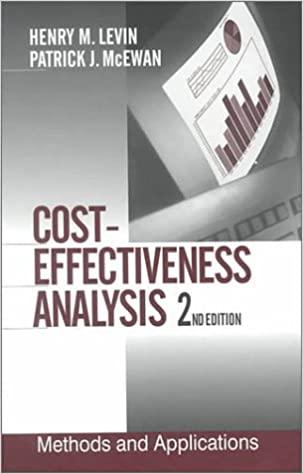Question
Dirk Dirkinson, General Manager of SuperSalty Potato Chips , was worried about the increasing intensity of competition in his industry. A strong economy had created
Dirk Dirkinson, General Manager of SuperSalty Potato Chips, was worried about the increasing intensity of competition in his industry. A strong economy had created greater consumable income for his customers, but new entrants had begun to eat away at his market. Quality control problems in the factory had convinced him that making potato chips was not all it was cracked up to be.
Mr. Dirkinson concluded that he needed a better understanding of the source of SuperSaltys profits. He began his analysis by collecting data on the revenues and costs of each of SuperSaltys value-added activities. It was time to crunch some numbers.
During the first half of 2016, SuperSalty sold 4, 237,000 pounds of potato chips and collected revenues of $1,289,000. Mr. Dirkinson sold his potato chips to various clients. The company produced the chips on an automated high speed processing line. The chips were then processed in a packing line, where they were either put into individual bags which were sold in grocery stores) or large boxes (for sale to bars and restaurants). SuperSalty distributed only part of its output. The company operated two fleets of trucks, one of which carried the bagged chips to local grocery stores. The second fleet took boxes to local restaurants. SuperSalty sold the rest of its output to distributors. They had exclusive contracts with several firms for distribution of boxed and bagged chips.
Mr. Dirkinson contacted his sales manager to find out the relative position of each product line. His manager, Ms. Johnson, provided the following information for the first half of 2019:
BOXED CHIPS BAGGED CHIPS
Distributed by Sold to Distributed by Sold to
SuperSalty Distributors SuperSalty Distributors
Pounds 1,234,700 1,667,900 345,300 989,500
Revenues $ 421,400 356,242 169,000 342,600
Figures on cost were harder to get. Mr. Dirkinson asked his plant engineer and distribution manager to estimate the variable costs for each stage of operation. Their consensus was that variable costs were $158,900 for production, $275,000 for boxing, $193,000 for bagging, and $54,800 for distribution. Fixed costs for the first half of 2016 were approximately $439,000. About half this expense was for the production of chips. Of the remaining half, roughly two thirds were in packaging, which was split evenly between the boxing and bagging operations. The other third was allocated to distribution, of which three fourths was thought to be for boxed chips (and one fourth for bagged chips).
SuperSalty was ready for expansion in the future. Mr. Dirkinson had limited resources to work with, and wished to maximize his returns. He had considered diversifying into other markets, such home heating oil, but was not encouraged by the project economics. Mr. Dirkinson felt that further investment in his core business was most attractive, but was uncertain about what areas of the business to emphasize. He knew that high profits were hardly in the bag.
Assignment:
This short case is a useful example of a value chain or value added chain analysis. I would like for you to work through Mr. Dirkinsons problem to get a better understanding of where the profits come from. You may want to ask the following question: What are the most important value-added activities for SuperSalty? Hint: Think about the different ways SuperSalty competes in this market and try to analyze their relative profitability.
Step by Step Solution
There are 3 Steps involved in it
Step: 1

Get Instant Access to Expert-Tailored Solutions
See step-by-step solutions with expert insights and AI powered tools for academic success
Step: 2

Step: 3

Ace Your Homework with AI
Get the answers you need in no time with our AI-driven, step-by-step assistance
Get Started


